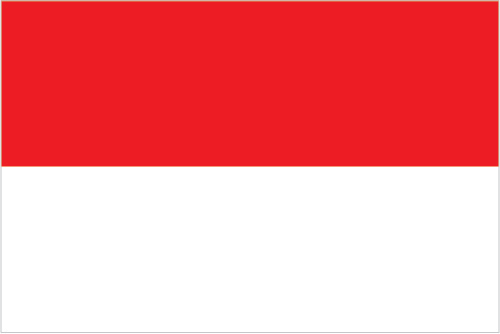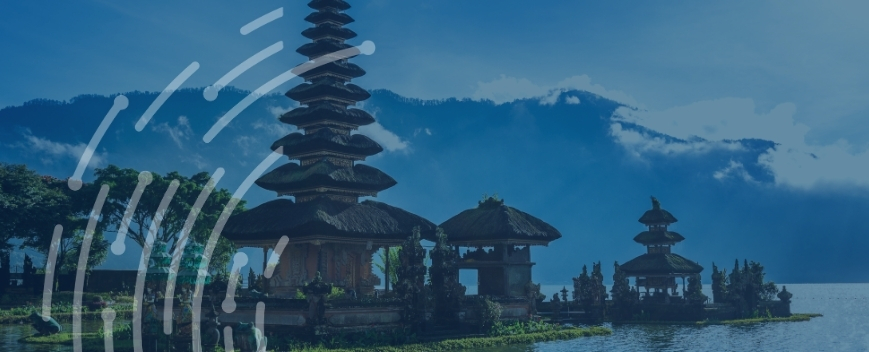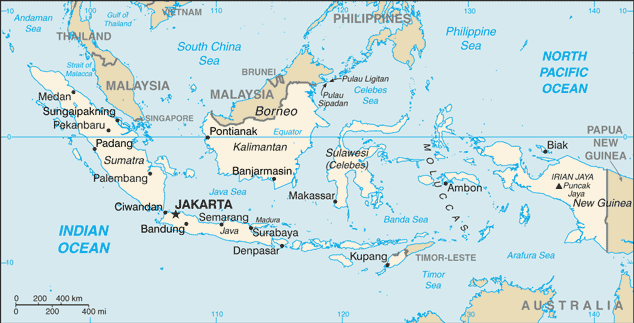Importing from Indonesia


Indonesia Country Profile
Official Name (Local Language) Republik Indonesia
Capital Jakarta
Population 258,316,051
Currency Indonesian Rupiah
GDP $941 billion
Languages Bahasa Indonesia
Phone Dial In 62
Indonesia Exports Profile
Exports ($m USD) 168,81
Number of Export Products 3,903
Number of Export Partners 216

Indonesia Economic Statistics
Government Website | https://indonesia.go.id/ |
| Sovereign Ratings | https://countryeconomy.com/ratings/indonesia |
| Central Bank | Bank Indonesia |
| Currency USD Exchange Rate | 13,483 |
| Unemployment Rate | 5.6% |
| Population below poverty line | 10.9% |
| Inflation Rate | 3% |
| Prime Lending Rate | 6.37% |
| GDP | $941 billion |
| GDP Pro Capita (PPP) | $11,700 |
| Currency Name | Indonesian Rupiah |
| Currency Code | IDR |
| World Bank Classification | Lower Middle Income |
| Competitive Industrial Performance | 41/138 |
| Corruption Perceptions Index | 96/180 |
| Ease of Doing Business | 73/190 |
| Enabling Trade Index | 70/136 |
Access trade, receivables and supply chain finance
We assist companies to access trade and receivables finance through our relationships with 270+ banks, funds and alternative finance houses.
Get StartedImporting from Indonesia
Imports to Indonesia fell in recent years, with purchases of non-oil products along with oil and gas showing dramatic reductions. In recent years, imports reduced almost 20% to around USD140 billion. The imports in Indonesia were on average over 3000 USD Million from 1960 until today, which hit a peak of over 17400 USD Million in mid 2013 with a record low of around 20 USD Million towards the end of 1959. The rate of growth for the Indonesian economy has been a steady 5 to 6% over the last 10 years. This shows a more stable rate than the economies of Brazil, Russia, India and China (BRIC) or Organisation for Economic Co-operation and Development (OECD) countries.
Importing from Indonesia: What is trade finance?
Trade finance is a revolving facility which alternative financiers offer – it enables organisations to buy products and can help ease cashflow issues.
Often, an alternative financier will fund most of the cost of the receivables, including charges (e.g. VAT charges).
Trade finance offers added advantages over more traditional bank finance including asset finance or business loans. Trade finance provides quick funding without affecting existing bank relationships.
How does it work?
If you’re an organisation importing or exporting inventory outside of your own country, then a trade finance facility would help you to fund this through offering a letter of credit (LC) or some form of cash advance.
I’m looking to import from XXX, how can Trade Finance Global help, and how does it work?
If you are looking to import products from other international markets, you may require import finance, which is an agreement between yourself (the importer) and the foreign exporter. A non-bank lender would act as the intermediary, paying the foreign exporter on your behalf until you get the inventory and have then sold them to your buyer. Repaying the funder then happens over an agreed period of time.
Chart Showing GDP Growth Compared to rest of world
GDP Composition for Indonesia
Agriculture
13.7%
Rubber and similar products, palm oil, poultry, beef, forest products, shrimp, cocoa, coffee, medicinal herbs, essential oil, fish and its similar products, and spices
Industry
40.3%
Petroleum and natural gas, textiles, automotive, electrical appliances, apparel, footwear, mining, cement, medical instruments and appliances, handicrafts, chemical fertilizers, plywood, rubber, processed food, jewelry, and tourism
Services
46%
Map
Top 5 Exports Partners
| Country | Trade | % Partner Share |
| China | 23,049 | 13.65 |
| United States | 17,810 | 10.55 |
| Japan | 17,791 | 10.54 |
| India | 14,084 | 8.34 |
| Singapore | 12,767 | 7.6 |
Top 5 Exports Products
| Export Product | Number |
| Palm oil (excl. crude) and liquid fractions | 11% |
| Other coal, not agglomerated, nes | 10.6% |
| Spelt, common wheat and meslin | 5.2% |
| Natural gas, liquefied | 3.1% |
| Petroleum oils and oils obtained from bituminou | 3.0% |
Local Partners
- All Topics
- Indonesia Trade Resources
- Export Finance & ECA Topics
- Local Conferences



















